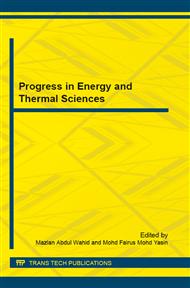p.129
p.134
p.140
p.146
p.151
p.156
p.169
p.174
p.179
An Economic Assessment of Hybrid Renewable Energy for a Remote Area Electrification in Iran
Abstract:
The utilization of renewable resources is growing, in part due to the environmental impacts caused by fossil fuels. The largest sources of renewable energy are wind and solar and many predict that these energy sources will be increasingly used for distributed generation. In this paper, the feasibility is examined of a grid-independent system applied for a remote area electrification in Binalood, Iran. Traditional power systems for remote or rural areas are based on fossil fuels. After addition of renewable energy resources, solar energy applications have become popular in remote energy systems. The recent study and research works show that adding other possible renewable energy resources such as wind, hydro and biomass could make a hybrid system more cost-effective and environmentally friendly. Hence, in the present study, an overview of applied hybrid renewable energy system (HRES) for worldwide villages with special attention on Iran has been proposed to help present and future works for better achievement in this field. Furthermore sensitivity analyses are performed to determine the impact on performance of several key parameters: wind speed and fuel costs. HOMER was used to evaluate the feasibility of various hybrid systems. The results of a comprehensive feasibility data analysis along with its economic evaluation indicate that the wind-diesel hybrid system with battery storage is most efficient energy system for supplying this remote area's electrical energy demands.
Info:
Periodical:
Pages:
151-155
Citation:
Online since:
January 2016
Price:
Сopyright:
© 2016 Trans Tech Publications Ltd. All Rights Reserved
Share:
Citation:


